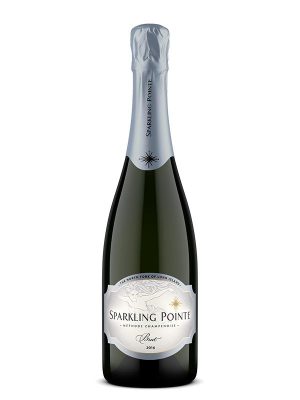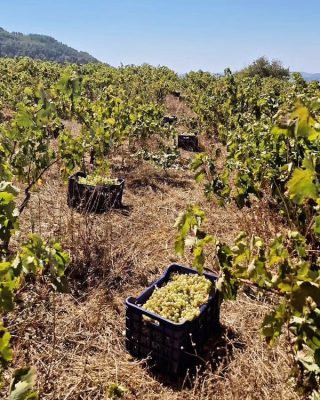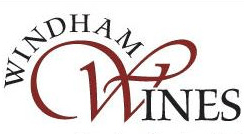Sparkling Wine
Sparkling wine, and champagne in particular, symbolize celebration and inauguration. As we bid farewell to another year and embrace the opportunity to begin anew, we know that we will be opening some bubbles over the next two weeks. Here are a couple that we will be enjoying over the holiday season.
 Sparkling Pointe
Sparkling Pointe
Brut, 2018
North Fork, Long Island
$28
The grapes of Champagne– Pinot Noir, Pinot Meunier and Chardonnay– made in the traditional Méthode Champenoise with a secondary fermentation in the bottle, by a winemaker from France (Gilles Martin) but vineyards and winemaker are on Long Island so the cost is 1/2 that of Champagne.
The tasting team enjoyed a bottle of the Sparkling Pointe, Brut, one Sunday afternoon when we got together to celebrate the return of one of us from a trip abroad and the end of her quarantine period to ensure that she was not unknowingly carrying and spreading some dreaded germs. We had much to celebrate and the Sparkling Pointe was the ideal companion– lively but soft bubbles delivered fresh pear and Meyer Lemon fruit flavors with a nice slightly-yeasty brioche layer finishing with a lingering minerality.
Graham Beck
Cap Classique, Brut, rosé
South Africa
$18
This sparkling has been a Windham Wines favorite for 15 years. It has been out of stock for the past 6 months. The tasting team shared a bottle last week and welcomed back an “auld acquaintance.”
Like the Sparkling Pointe above, the Graham Beck Cap Classique uses the grapes of Champagne and the Méthode Champenoise to produce this affordable but oh-so-satisfying celebratory bottle. Ripe strawberry and raspberry fruit, just a whiff of something floral and some inviting baking spice brought smiles to all our faces.
Wine Discoveries
 Our byline invites you to “shop locally, taste globally.” That is easier now to do than ever. Our distributors are working with more importers from more countries, bringing in wines made from grapes of which we’ve not heard, from regions for which we consult maps. Windham Wines now offers wines from 17 different countries. Within the US, we carry wines from 9 different states. The tasting team was active over 2023, and what a year of discovery it was for us. From the return of Australia to the introduction of wines from Maryland and Michigan, it has been an exhilarating year of learning.
Our byline invites you to “shop locally, taste globally.” That is easier now to do than ever. Our distributors are working with more importers from more countries, bringing in wines made from grapes of which we’ve not heard, from regions for which we consult maps. Windham Wines now offers wines from 17 different countries. Within the US, we carry wines from 9 different states. The tasting team was active over 2023, and what a year of discovery it was for us. From the return of Australia to the introduction of wines from Maryland and Michigan, it has been an exhilarating year of learning.
We reviewed the year to identify our favorite discoveries across the year. Some of those, sadly, are already gone (and are not included below), but there will be another vintage in the months ahead and in the meantime, there is always something else to sample. As you know, we focus mostly on smaller producers. Often, there just isn’t enough wine for the demand, particularly when there is a vintage that shines. Even so, we have a number of wines that we are still enjoying and that we can strongly recommend. Some may look familiar; they may have been recommended in earlier 2023 emails.
White
Avondale, Jonty’s Ducks, Pekin White, Paarl, 2020: $19, biodynamic (13%)
85% Chenin Blanc, rest Roussanne, Viognier, Semillon
The wine was recently reviewed by the Decanter crew who gave it a 95. While scores are hard to replicate, there is a huge amount of pleasure in this blend. We loved it. Here is the Decanter team’s assessment:
- Greg Sherwood MW: Plush with seductive notes of pineapple puree, tart yellow plum, yellow orchard fruits and a focused, sweet-sour intensity on the long, pure finish. Impressive.
- Beverley Blanning MW: A Rhônesque feel, lots of peaches and apricots, savoury character. Silkily textured, glossy fruit and lowerthanusual acidity. A creamy richness from the partner grapes.
- Roger Jones: Fresh, opulent perfume, floral notes and wild herbs. Racy, focused citrus essence balancing ripe nectarine, pear and delicate brioche. Great blend.
Old Westminster, Salt, Maryland: $20 (13%)
A blend of Gruner Veltliner, Chardonnay and Albarino. We recommended this wine for Thanksgiving. Two of our team included it among their Thanksgiving wines and reported back that it was a superb companion at the table and well-received by both households. It re-appears as one of our discoveries of 2023.
Tons of juicy fruit– apple, peach, melon and grapefruit, with that wonderful saline-mineral finish from which its name derives. The vineyard soils are described as schist and limestone, both of which are associated with freshness and minerality. You may be surprised by how much you enjoy this east coast wine!
Troon, Druid’s White, Applegate Valley, 2022: $23, biodynamic, regenerative organic (12.5%)
The 2022 Druid’s white is a blend of Vermentino and Marsanne. Tasters identified fruit (apple to pineapple), salinity, savory fresh herbs, and floral aromas and flavors. The texture is smooth and crisp.
At Troon, pursuing regenerative organic certification with biodynamic farming completed the circle linking healthy soils with humane animal husbandry and respectful labor practices and wages. Perhaps we have just drunk the kool-aid, but we think it shows in the life of the Troon wines. If you like a flavorful white that finishes crisp and long, this wine has your name on it. This is the favorite white of the year for two members of the tasting team.
Voštinić – Klasnić, Skrlet, Moslavina (Croatia), 2022: $20, organic (12%)
Skrlet is a grape indigenous to central Croatia, principally in the micro region of Moslavina south of Zagreb. Nearly extinct, it has enjoyed a resurrection since the 1990s, though there are still only about 100 hectares planted.
Skrlet is described as “delicate” and “fresh,” producing low-alcohol, high acid wines with fruit, floral and herbal aromas. We found all of those– ripe pear and apricot that moved toward tropical (pineapple), floral was somewhat elusive, more spring flower than blossom while the herb dimension was fresh young parsley and lemon thyme, and a little bit of recently-hayed meadow.
One of the the striking characteristics of this wine and the Xynisteri below is their texture. While only 12% alcohol, the Voštinić – Klasnić Skrlet has a bit of creaminess, almost unctousness while at the same time, conveying a lively freshness.
Vouni Panayia, Alina, Xynisteri, Paphos, Cyprus: $20 (12.5%)
This is, admittedly, the first Xynisteri that we have had. Janis Robinson, author of Wine Grapes, a resource that reviews the genealogy and characteristics of 1368 wine grape varieties includes only 3 varieties that start with X (we have the other two as well– Xarello and Xinomavro). She notes that it is the most widely-planted variety on Cyprus, used to make both dry and sweet wines.
Vouni Panayia is one of the small viticulturist-winemaker wineries that benefited from Cyprus’ membership in the European Union. According to Master of Wine, Demetri Walters, subsidies to grape growers were disallowed, which led large producers to leave the market providing opportunities for boutique, independent producers like Vouni Panayia, to meet the demand.
Vouni Panayia’s Xynisteri is made from 70-year old bush vines. We found it to have citrus (grapefruit and Meyer Lemon) and tropical fruit (pineapple and melon) along with a briny, saltiness on the nose. On entry, the wine is medium-bodied with a silky texture, concentrated tropical fruit almost to dried fruit, along with an herbal (rosemary, bay leaf) layer. Those who prefer lower acid whites should find a lot to enjoy.
Red
Descombe (Mary Taylor), Juliénas, 2019: $25 (13.5%)
100% Gamay
The Descombe family have been making wine at their Beaujolais estate since 1905. The young 5th generation, Marine and Francois Descombe, and Kevin Jandard, have transitioned to leadership, including embracing organic production.
The Juliénas is a Mary Taylor wine, an importer who many of you have come to trust, recognizing her straightforward white label with black lettering identifying the AOC. You may know that Mary has a knack for finding wines that reliably represent their place. She also seeks out young female producers who, like Marine Descombe, craft a wine specifically for Mary Taylor.
Notes from our tasting found a nose with warm, ripe red fruit (cherry), violets, graphite and a savory herbal note of thyme and oregano. On the palate, the wine was medium-bodied with noticeable but ripe and accessible tannins, cherry fruit with a very pretty graphite-mineral quality and a greenish thyme seasoning that integrated in beautifully when the wine was given time to open.
Horus, Frappeto, Vittoria, Sicilia, 2021: $24, organic (13%)
Frappeto is a variety native to southeast Sicily’s Regusa province (fans of Inspector Montalbano know the location well). There are just over 800 hectares of Frappeto in Sicily, which converts to less than 1% of the land planted to vineyards there. Ian D’agata describes Frappeto as “the variety responsible for some of Sicily’s most delicious unknown wines.”
One of the paradoxes that first drew our attention to Frappeto is that despite coming from a semi-tropical arid Mediterranean climate (temperatures of 110 degrees Fahrenheit are not uncommon in the summer), Frappeto produces low-alcohol, light-bodied wines.
All four tasters gave the Horus 4 stars, our top rating. We got strawberry and cranberry fruit, ash, leather and floral (from violets to geranium) aromas. On the palate, a lighter weight but with a smooth, glycerol texture, and ripe berry fruit, a little smoky peat, a sweet core that was lifted by the nice acidity on the finish.
Psi, Ribero del Duero, 2020: $33, biodynamic (14%)
95% Tempranillo, 5% Garnacha
This is Peter Sisseck’s “affordable” Pingus, made from grapes purchased from local growers who farm very old, head-pruned vines. Sisseck has worked with them to shift their philosophy from quantity to quality, producing healthier, more expressive grapes by converting to organic and biodynamic practices.
2020 was a hot year. Yet the combination of the limestone soils that enhance acidity and blending a bit of Grenache and some white varieties yield a balanced wine with fresh blackberry and black-cherry fruit, some floral aromatics and an elegant palate.
Luis Gutirrez, reviewer of Spanish wines for the Wine Advocate, wrote that the 2020 “bottled wine has all that the sample promised—clean and healthy aromas, floral and elegant, aromatic and with good freshness.” He gave it a 93.
Rosset, Trasor, Syrah, Valle d’Aosta, 2019: $22 (13%)
Mostly Syrah, with a splash of Cornalin and Petit Rouge
Valle d’Aosta is an valley formed by the Doro Baltea River that begins on Mont Blanc in the Alps and flows east through Aosta before turning south to Piedmont where it connects with the Po. Cattle graze in the alpine meadows and provide the milk that becomes the Fontina cheese that creates the creamy, satisfying fonduta into which other regional products are dipped– cubes of rye bread, apples and potatoes.
Local wines pair beautifully, their acidity cutting through the fattiness of the cheese. This is the third vintage that we have found the Rosset, Trasor, to embody a superb expression of syrah– blackberry and plum fruit, a cured-meats-sweet smokiness and a peppery note all conveyed with a smoothness and freshness that make this wine easy to return for more.
Voštinić-Klasnić, Epitet, Red Blend, Moslavina (Croatia): $20, organic (13%)
45% Cabernet Sauvignon, 45% Cabernet Franc, 10% Merlot
Voštinić – Klasnić is a new producer for us this year and, as you can see since one of the whites is also highlighted, we liked what we tasted. While Skrlet is the signature grape of the winery, we found a lot to enjoy with the Epitet.
Brambly fruit (blackberry and dark currant), anise that one taster found more resin than licorice, fig and even chocolate commingle to create a wine with broad appeal.
